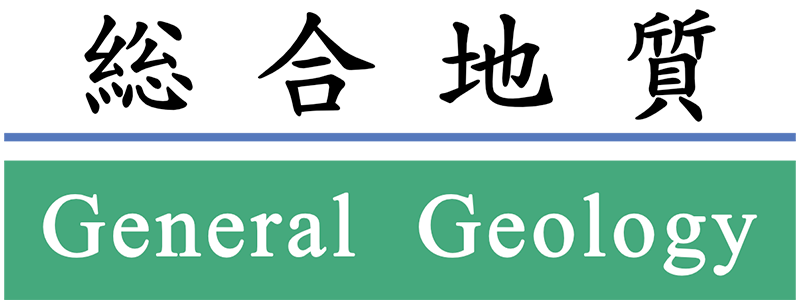

- Review -
An overview of geological manifestations and causes of present-day and ancient flat-slab and low-angle subduction in convergent margins [PDF for web-browsing 3.0MB] [Hi-resolution PDF 9.5MB]
Kazuo Kiminami
General Geology, Vol. 7, Page 1–24.
Abstract
Flat (low-angle) subduction is an enigmatic style of subduction where the slab attains a horizontal (low-angle) orientation for up to several hundred kilometers below the base of the overriding plate. Flat or low-angle subduction occurs in 10% of the subduction zones presentday. I herein review geological features and manifestations, and causes of present-day flat-slab and low-angle subductions, as well as ancient examples. Flat-slab subduction has equated with low-angle subduction in general, although, it is more appropriate to distinguish between the two subduction styles, because there are some different features in the both. Typical flat-slab subduction is well established beneath South America, in central Chile (Pampean flat-slab) and Peru (Peruvian flat-slab), and beneath Mexico (Mexican flat-slab). Pampean flat-slab and Peruvian flat-slab are associated with overthickened oceanic crust. Low angle subduction is found beneath Cascadia, south Alaska, and SW Japan. A number of possible hypotheses have been proposed to explain the formation of flat-slab (low-angle) subduction, although, the origin remains controversial. These hypotheses include: 1) subduction of anomalously buoyant oceanic crust such as aseismic ridges and oceanic plateaus, 2) rapid trenchward motion of the overriding plate, 3) increased suction force (a large negative pressure above the slab interface which is enhanced by the existence of continental root), 4) preferentially occurs at wide and prolonged subduction zones. Two or more of these would be responsible for the formation of flat-slab (low-angle) subduction. A change in subduction style from flat (shallow) to steep (normal) would depend largely on the basalt-to-eclogite transition of the subducting slab with overthickened oceanic crust, although, the relationship between eclogitization and flat-slab subduction is still unclear.
- Article -
Diatom analysis of the NGA-1 boring core, late Pleistocene to Holocene, drilled in the Naganuma, central Hokkaido, Japan [PDF for web-browsing 2.0MB] [Hi-resolution PDF 4.1MB]
Tsumoru Sagayama
General Geology, Vol. 8, Page 25–32.
Abstract
Diatom analysis was performed to clarify the sedimentary environments of 22 core samples in the NGA-1 boring with 30 m length, drilled in the Naganuma, central Hokkaido. Five units are divided based on sedimentary facies. The lowest part of the core, unit one, is the MIS 5e sediments, and the uppermost part, unit five, is the MIS 1 sediments. Many marine species and marine to brackish species diatoms, supplied by the Jomon transgression, are yielded in the MIS 1 sediments. At the Toya ash fallen, ca 109 ka, marine or brackish water covered in many parts of the Ishikari Lowland, and peat field spread in the Naganuma Lowland.
Latest Quaternary geology and environmental changes over the last 2000 years of the Maizuru Retarding Basin in the Chitosegawa-River system, central Hokkaido [PDF for web-browsing 3.3MB] [Hi-resolution PDF 41.7MB]
Takao Oka, Fusa Hoshino, and Satoshi Yasui
General Geology, Vol. 8, Page 33–58.
Abstract
The Maizuru Retarding Basin of the Chitose-gawa River system, occupies a plot of the area of Maoi-numa reclaimed after Warld War Ⅱ . The authors examined subsurface stratigraphy and geologic features under the ground by drilling documents with Maizuru Basin and its adjacent area, revealing the presence of alluvial deposits of more than 25 m thick. About the top of the formation, they worked on geological observation of construction section in the basin and agriculture drainage wall in its neighboring area, and performed AMS14C-dating, and pollen and diatom analysis. In the southeast of the basin, the uppermost 2 meters (of the basin deposits) consists of the layer of cultivation disturbance soil or embankment, the humus peat layer (peat layer A), Ta-a (1739 fall of ash), the gray mud layer (quality of silty clay ~ clay, sediments of Maoi-numa) and the layer of fiber peat (peat layer B) in descending order. The AMS14C-dating suggests that the parts more than this peat layer B, it became clear the sediment of period for more than 1,200 years, from an end of the Nara era to date. Diatom assemblages from the gray mud member, containing 1−15 % marine and brackish species, show a closed wetland formed just after the Jomon transgression peak. This shows the possibility that this area was wetlands which were confined on the land after the Jomon transgression peak. Pollen analyses indicate that relatively warm environment has been maintained over the last 2000 years, although, slightly chilly environment is presumed around AD 1800, the latter half of the Edo era.
- Note -
Benjamin S. Lyman and Hokkaido – From the view of cultural exchange between Japan and United States - [PDF for web-browsing 2.3MB] [Hi-resolution PDF 21.8MB]
Hideshi Seki
General Geology, Vol. 8, Page 59–73.
Full-issue Download Page for the "General Geology" is here .
・Volume 8, Number 1
・Volume 7, Number 1
・Volume 6, Number 1
・Volume 5, Number 1
・Volume 4, Number 1
・Volume 3, Number 1
・Volume 2, Number 1
・Volume 1, Number 1